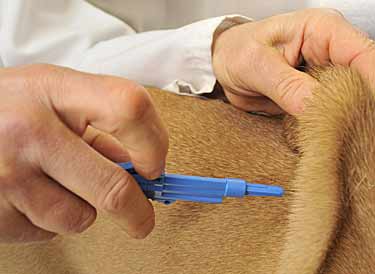It’s many pet owners worst nightmare. They turn their back
for a second and their beloved friend slips out the door or fence before they
can get it closed. This is a very real scenario for many pet owners. You can do
everything right and sometimes our pets just have a mind of their own and get
away or a leash breaks and they take off.
Certainly having your pets wear collars with ID tags is one
way to help ensure that they can be returned to you. However it is possible for
collars or tags to fall off, especially if your pet is frightened and running
through more rough terrain.
Many years ago another option that some people chose was a
tattoo in the pet’s ear that was placed while they were under sedation. This
has somewhat fallen out of practice but some breeds used for working still use
this method. Examples of some of these would be racing greyhounds or police
dogs or even some service dogs.
One of the fastest growing and most common ID methods is
micro-chipping pets. This is a small chip that is placed under the skin of the
pet. The good news is that it can be placed when the patient is awake or
sedated. Each chip has a specific number (which may include letters) that can
only be found in that pet. While there are many different, companies that make
microchips, they all work under the same principles. Most shelters and many
veterinary clinics will have a universal chip reader which will allow them to
read the majority of microchips placed in the United States . Once a pet is found
one of the first things a facility will do is scan for a microchip then look up
the corresponding information.
Here is THE MOST important part of using microchips in
patients. It is VITAL to keep all your information updated and accurate with
the company. If they have an old address or phone number the chip is not much
good and they will be less likely to return your pet to you. Typically the
chips are registered to the facility that administered it, it is then your job
as the owner to register your pet to you and leave as many ways to contact you
as possible.
No one wants to loose their pet, and the good news is there
are now many great ways to help ensure that your pet has the best chance of being
returned to you. If you have any questions about microchips please contact your
veterinarian or local shelter.



.jpg)

No comments:
Post a Comment